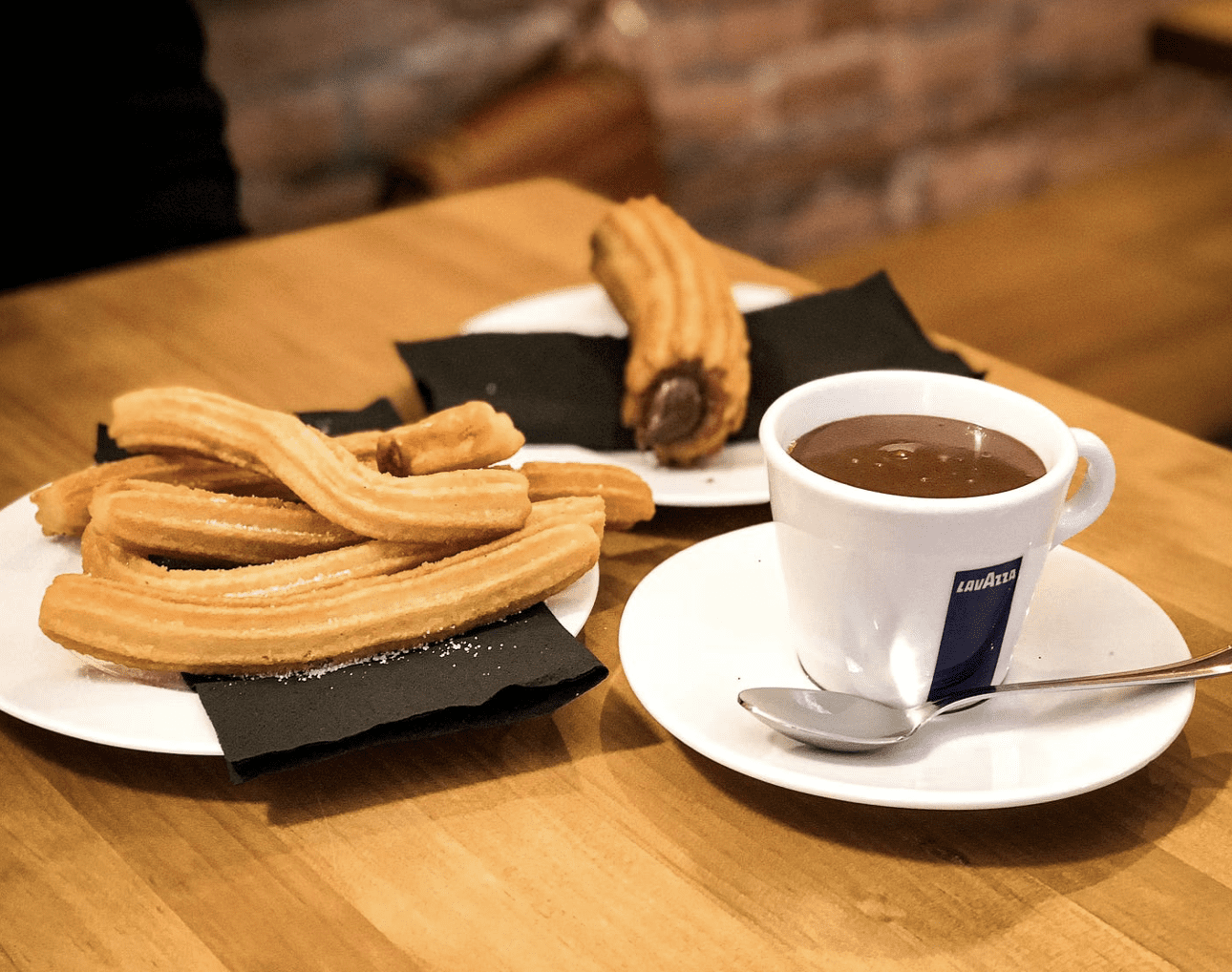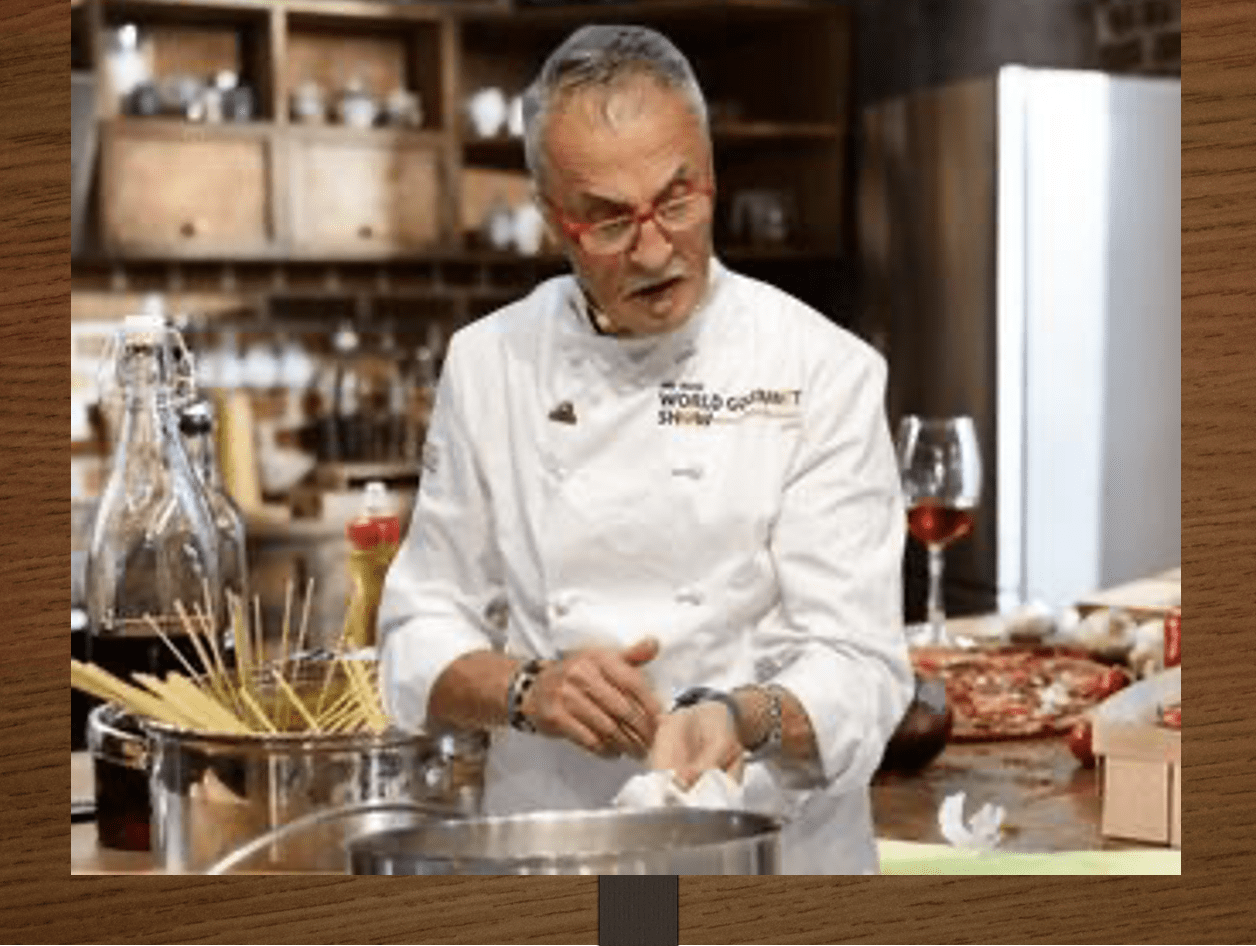Search Posts
Recent Posts
- Rose Island experts Sean O’Connor and Michael Simpson – G. Wayne Miller, Ocean State Stories June 11, 2025
- Time for Sour Grapes! – 6.11.25 – Tim Jones June 11, 2025
- Rhode Island Weather for June 11, 2025 – Jack Donnelly June 11, 2025
- What you should know about Social Security if your spouse passes away – Cheryl Tudino, SSA June 11, 2025
- It is what it is… 6.11.25 – Jen Brien June 11, 2025
Categories
Subscribe!
Thanks for subscribing! Please check your email for further instructions.

Ask Chef Walter: Churros in Madrid, Chef Walter Potenza
by Chef Walter Potenza, contributing writer
Whether enjoyed plain, dusted with sugar, or thick chocolate, churros are more than just a snack—they are a cultural symbol of Spain’s rich culinary history, connecting the past with the present.
Friends:
My passion for soccer and food racing simultaneously took me to Madrid, Spain. While my reason for going was to watch a soccer game, I could not afford to leave without visiting the famous Mercado de San Miguel. This historic market stands close to the Plaza Mayor and represents a place of excitement in the gastronomic field, which every food lover will want to attend. The iron-and-glass building, the hustle and bustle of the action, and the stalls full of Spanish delicacies combine to create an unforgettable experience.
Among the numerous temptations, my aim was relatively precise: to have the classic churros and chocolate, a marriage so associated with Madrid that it was almost a cultural rite of passage. The market’s vibrant atmosphere and the smell of freshly fried churros immediately hit my senses, setting up what doubtless will be a memorable foodie experience.
San Miguel Market, Madrid, Spain
So, I want to share a good recipe with you; even if you are not in Madrid right now, it’s always churro time!
How to make churros
Churros are doughnut-like treats, similar in shape to the horns of the churro sheep found in Spain. Churros are sometimes served at breakfast in some countries but are delicious anytime. While not healthy, these tasty snacks are quick to make and inexpensive. The next time your family wants a sweet dessert, make some homemade sugar-coated churros and watch how fast they disappear.
Let’s get to the kitchen and whip up some of these delicacies.
Ingredients
190 g (1 ½ cups) sugar
3 eggs
125 ml (1 cup) milk
125 g (1 cup) flour
Instructions
Combine the butter, milk, and 125 g (1 cup) of sugar in a small pan and heat on medium-high. Lay two or three sheets of paper towels on a plate and set aside until needed. Bring the milk mixture to a boil. Remove the pan from the stove. Add the flour to the milk mixture and stir until well mixed.
Next, blend the eggs and vanilla extract into the batter with an electric mixer. Pour 390 ml (3 cups) of vegetable oil into a large pan and heat on medium-high. Fill the pastry tube with the churro batter. Try using a star tip for your pastry tube for a professional-looking churro. Squeeze out three or four lines of batter about 10 cm (4 inches) long into the hot oil.
Cook for 1 minute, flip the pastries over, and cook for another minute or until golden brown. Remove the fried dough from the pan and place it on the plate. The paper towels absorb any excess oil on the churros. Put the remaining sugar on a plate and roll the churros in the sugar while still hot.
You can also mix cinnamon with the white granulated sugar or use icing sugar for the coating. Your homemade churros are now ready to eat.
Opened in May 1916 as a local food market, the Mercado de San Miguel—one of the city’s finest examples of cast-iron architecture located a stone’s throw from Plaza Mayor—became Madrid’s first gourmet market in 2009. Nine years later, in 2018, it was relaunched, with several internationally renowned chefs joining the ranks.
Situated in the heart of the area known as Madrid de los Austrias (Hapsburg Madrid), it welcomes over 10 million visitors a year. Inside, you can sample the finest products from different parts of the country, ranging from tapas prepared with the freshest fish and seafood from the Galician coast to a wide variety of gourmet cheeses from all over Spain, without forgetting meat, fruit, vegetables, cakes and an endless range of options at the 30 stands that make up the market’s fleet.
Cooking Classes in Rhode Island
The History of Churros in Spain
Churros, the golden, crispy, fried dough sticks dusted with sugar, is one of Spain’s most beloved treats. While they are now synonymous with Spanish cuisine, their history is a fascinating journey influenced by multiple cultures and traditions.
The precise origins of churros are debated. One theory suggests they were inspired by youtiao, a similar fried dough delicacy brought to Europe by Portuguese explorers returning from China during the Age of Exploration in the 16th century. The Portuguese adapted the concept, creating a dough that could be fried into elongated shapes. Spanish shepherds, who often needed portable and quickly cooked food, adopted the recipe, leading to the development of churros as we know them.
The name “churro” is believed to come from the Churra sheep, a breed native to Spain. The churro’s ridged shape resembles these sheep’s horns, which is a testament to its origins as a shepherd’s snack.
Over time, churros transitioned from a shepherd’s simple meal to a popular street food in cities and towns across Spain. By the 19th century, they had become a staple of Spanish breakfast culture. Typically paired with chocolate caliente (thick hot chocolate) or café con leche, churros are enjoyed fresh from churrerías (churro shops) or street vendors.
Spanish churrerías innovated on the original recipe, using a star-shaped nozzle to pipe the dough, giving the churros their iconic ridges. This innovation also allowed the churros to crisp evenly during frying, enhancing their texture.

Churros Across the Globe
As Spanish explorers and settlers expanded their reach, churros were introduced to Latin America and the Philippines. In these regions, the recipe evolved to include variations such as fillings (dulce de leche, chocolate, or guava) or coatings (cinnamon sugar).
Today, churros are a celebrated global treat, but their roots remain deeply tied to Spain.
In Spain, churros continue to hold a special place in everyday life. They are often eaten as a breakfast treat or a late-night snack, particularly during festivals or after a long evening of celebrations. Regional variations also exist, such as porras, a thicker and doughier cousin of the churro, commonly found in Madrid.

Chef Walter is in Madrid, enjoying churros and chocolate on a rainy day with the Juventus Football Club Jacket to keep the football enemies away.
Whether enjoyed plain, dusted with sugar, or thick chocolate, churros are more than just a snack—they are a cultural symbol of Spain’s rich culinary history, connecting the past with the present in every bite.

Chef Walters Culinary Tourism Tours 2025
___
Chef Walter is featured HERE every Sunday with his regular Ask Chef Walter column!

Meet Chef Walter!
There is a constant, recognizable thread in the career of Walter Potenza to elevate the level of Italian culinary culture in the United States. Besides his unquestionable culinary talent and winning business perspective, Chef Walter has been a relentless educator with passion and knowledge who defeats stereotypes. His life, career, and values are a model, an example to follow by any chef of Italian gastronomy working outside Italy.
Chef Walter appears regularly on National and International Networks such as Food Network, ABC, CBS, NBC, RAI, FOX, and Publications such as NY. Times, Washington Post, Wall Street Journal, Food & Wine, Saveur, Gourmet, and several Italian media outlets. And now “ RINewsToday!



Known Walter Potenza for many, many years , always considered him a Master Chef a very good friend and a very inquisitive person looking for the outside boundries of creative food styles. To see him achieve the international reputation he has to me personaly is very rewarding….Congratualations my friend